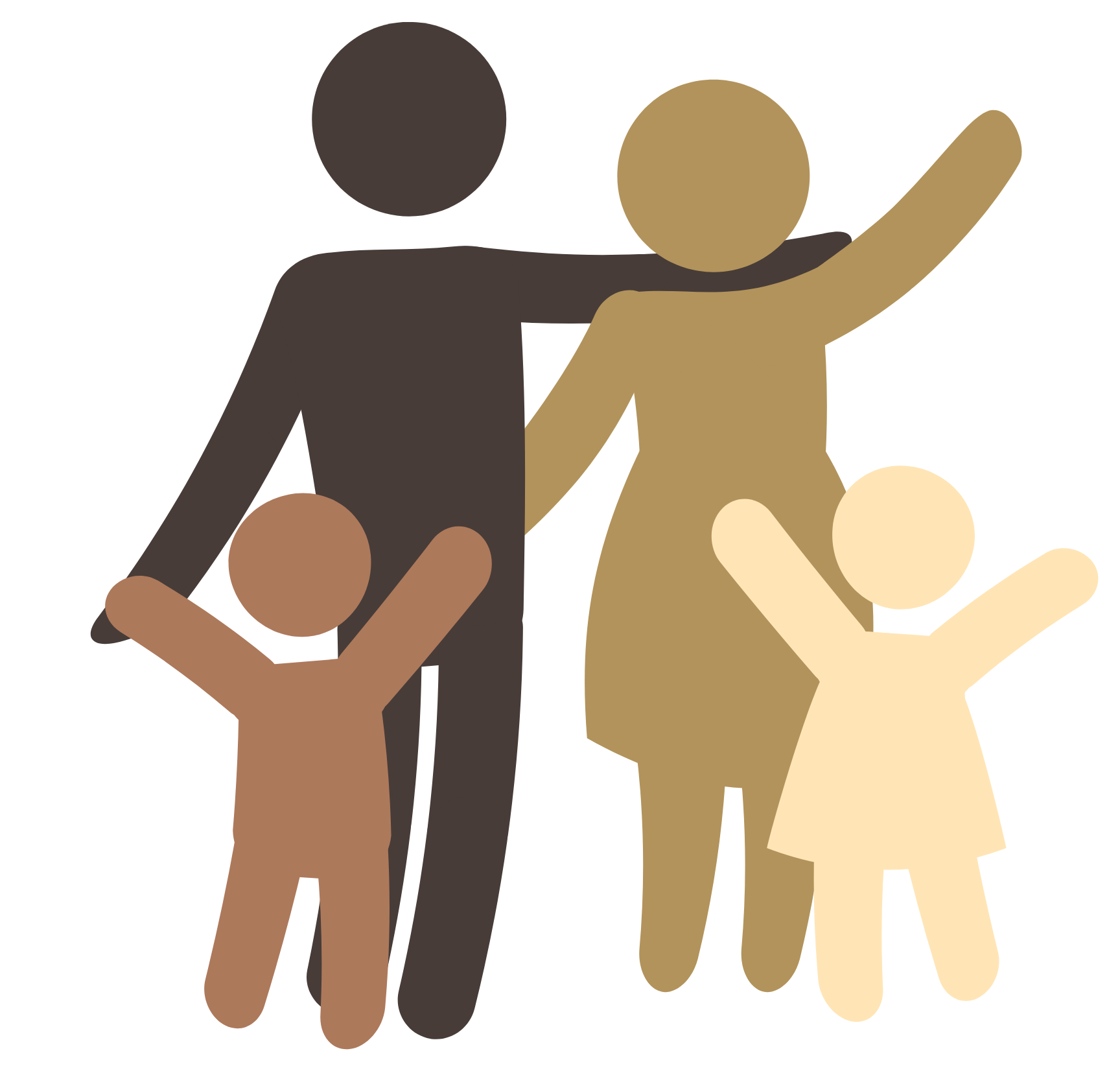
Outcomes:
- identify sources of trauma
- identify how trauma is demonstrated through behavior
- learn how to assess for trauma
- learn strategies for addressing trauma as part of treatment
===========================================================
9:00 Welcome, Outcomes and Process, Groups
9:15 What is the Federal Administration for Children and Families (ACYF) Children’s Bureau (BC) telling states?
Directions: (1) Read pages 2 – 4 (10 minutes)
(2) Select a group reporter
(3) As a group answer the following question (5 minutes):
What is the federal CB saying about “trauma informed care”?
________________________________________________________________
________________________________________________________________
9:30 Large group sharing
What the Federal Administration for Children and Families (ACYS) Children’s Bureau (CB) is saying to states:
________________________________________________________________
The Federal Administration for Children and Families Children’s Bureau on April 17, 2012 issued Information Memorandum ACYS-CB-IM-12-04 which requires states to include in their health oversight plans a description of how they will screen for and treat trauma associated with removal into foster care (group and residential care), including a complete trauma history
The Federal Administration for Children and Families Children’s Bureau on April 17, 2012 issued Information Memorandum ACYS-CB-IM-12-03 which defines the issues surrounding psychotropic medication use by children in foster care, highlights available resources for States to consider when developing their Annual Progress and Services Report (APSR), and encourages increasing access to clinically appropriate screening, assessment, and evidence-based interventions for foster children with mental health and trauma-related needs.
Excerpts from ACCY – CB 4.14.2012 Memo to states:
Traumatic Impact: Traumatic events can elicit mental and physical reactions in children, including hyper-arousal and dissociation. If these acute “states” are not treated after children experience trauma, they can become chronic, maladaptive “traits” that characterize how children react in everyday, nonthreatening situations (Perry, 1995).
V. Requirements and Policy Opportunities
Titles IV-B and IV-E of the Social Security Act and the Child Abuse Prevention and Treatment Act (CAPTA) have historically included provisions that promote the well-being of children. Title IV-B programs are intended to enhance the safety, permanence, and well-being of children who are in foster care or are being served in their own homes. The title IV-E foster care program includes requirements to address a child’s well-being, such as in the areas of health and education. CAPTA provides funding for prevention, assessment, and treatment programs to increase the well-being and safety of children who have been abused or neglected. Some policy requirements and opportunities in existing policies related to social and emotional well-being are listed below:
- Trauma Screening and Treatment: 2011’s Child and Family Services Improvement and Innovation Act requires States to include in their health care oversight plans a description of how they will screen for and treat emotional trauma associated with maltreatment and removal for children in foster care (section 422(b)(14)(A)(ii) of the Social Security Act). Identifying the trauma-related symptoms displayed by children and youth when they enter care is critical for the development of a treatment plan. It is also important to have a complete trauma history for each child. Although children come to the attention of the child welfare system as a result of a specific allegation of maltreatment, abuse and neglect are chronic in nature. Child welfare workers should have an understanding of the multiple types and incidences of trauma children have experienced, beyond just the event that precipitated child welfare involvement. Conducting comprehensive functional assessments according to a standardized schedule (e.g., every six months, or every time a child moves to a more restrictive placement setting) can help caseworkers and administrators gauge whether or not treatment strategies are working to decrease children’s symptoms. States could consider integrating trauma screening into the regular screening activities taking place under EPSDT in order to meet the new requirement.
- Child welfare and mental health systems can develop the capacity to install, implement, and sustain these evidence-based and evidence-informed interventions by using research to identify effective and promising interventions that meet the needs of the specific population to be served; making needed adaptations to bring the interventions to scale within the child welfare system, developing an awareness of principles of evidence-based practices among staff at all levels; and reorganizing infrastructure to support implementation fidelity and further evaluations of these practices and interventions.
- Evidence-based and evidence-informed practices have been developed to address the most common mental health diagnoses, trauma symptoms, and behavioral health needs of children and show measurable improvements or promising results. These interventions show measurable improvements or promising results in decreasing emotional/behavioral symptoms; diminishing depression, anxiety; increasing the ability to self-regulate; improving physical health; and helping traumatized children and youth form and maintain healthy attachments. There are also evidence-based and evidence informed interventions geared toward improving outcomes related to youth skill development, education, and employment. (Job Corps and Big Brothers/Big Sisters are examples.) Many of these practices are available but have not been brought to scale or targeted to the foster care population even though they have been shown to improve functioning. Others have shown promising results, and should be evaluated more broadly as they are implemented more widely.
It is important to note that many of the evidence-based interventions that improve child functioning require the involvement of caregivers and specifically target their behaviors for change as well. Caregivers need support in managing the behaviors of children who have experienced maltreatment and in providing a nurturing environment in which healing can occur. In such supportive contexts, children can learn “the value, purpose and safety of relationships” (Rees, 2010). In order to achieve better outcomes for children who have experienced maltreatment, it is essential to engage families, whether biological, foster, or adoptive, in the process of healing and recovery.
X. Strategies for Shifting the System to Promote Social and Emotional Well-Being
- Evidence-Based Interventions: Deliver evidence-based and evidence-informed interventions for the treatment of trauma and mental health disorders. When evidence-based screening and assessment indicates that children are suffering from trauma and/or mental health symptoms, it is necessary to provide treatments that effectively improve functioning. Child welfare systems will need to collaborate with mental health and Medicaid systems to build an array of evidence-based or evidence-informed interventions to improve trauma and mental health-related outcomes for children who have experienced maltreatment.
9:35 What we are talking about today: “trauma”, “resilience” and “multi-generational trauma ( 15 minutes)
1. Read the following statement from the federal departments of Health and Human Services (HHS) , Administration for Children and Families (ACF), Centers for Medicare and Medicaid Services (CMS) and Substance Abuse and Mental Health Services (SAMHSA):
The rate of trauma of children in out-of-home care is approximately 90%. Federal Departments of HHS, SAMHSA AND CMS in its July 11, 2013 letter to State Directors states:
The CDC’s Adverse Childhood Experiences Study (ACE Study). It uncovered a stunning link between childhood trauma and the chronic diseases people develop as adults. This includes heart disease, lung cancer, diabetes and many autoimmune diseases, as well as depression, violence, being a victim of violence, and suicide.
The study’s researchers came up with an ACE score to explain a person’s risk for chronic disease. Think of it as a cholesterol score for childhood toxic stress. You get one point for each type of trauma. The higher your ACE score, the higher your risk of health and social problems. Adults who experienced 6 or more ACEs are likely to die 20 years sooner than those with no ACEs.
A whopping two thirds of the 17,000 people in the ACE Study had an ACE score of at least one; 87 percent of those had more than one. With an ACE score of 4 or more, things start getting serious. The likelihood of chronic pulmonary lung disease increases 390 percent; hepatitis, 240 percent; depression 460 percent; suicide, 1,220 percent. Public health experts had never seen anything like it.
The second game-changing discovery explains why childhood trauma has such tragic long-term consequences: Toxic stress physically damages a child’s developing brain. This was determined by a group of neurobiologists and pediatricians, including neurobiologist Martin Teicher and pediatrician Jack Shonkoff, both at Harvard University, neuroscientist Bruce McEwen at Rockefeller University, and Bruce Perry at the Child Trauma Academy.
If you have reading time left, please read Appendix A, pages 19 – 21
2. Then go to page 6 and complete the individual task as directed.
3. Individually:
Define “trauma” as _______________________________________________
_____________________________________________________________
Define “multi-generational trauma” as _________________________________
____________________________________________________________
Define “resilience” as ______________________________________________
_____________________________________________________________
Write an example of “multi-generational trauma” is
________________________________________________________________
9:45 In your group:
- Select a new group reporter
- As a group develop a consensus group definition of trauma.
- As a group develop a consensus definition of what resilience is.
- As a group develop a consensus definition of “multi-generational trauma
- Compile your list of examples
The purpose of this activity is to be sure we are all understand what we are talking about. You will have 10 minutes. If ready early, let the Trainer know.
We define “trauma” as ______________________________________________
______________________________________________________________
We define “multi-generational trauma” as _______________________________
_____________________________________________________________
We define “resilience” as ____________________________________________
________________________________________________________________
Examples of “multi-generational trauma” are ____________________________
________________________________________________________________
________________________________________________________________
________________________________________________________________
________________________________________________________________
9:55 Large group sharing of definitions and consensus
“trauma” is _______________________________________________________
________________________________________________________________
“multi-generational trauma” is ________________________________________
________________________________________________________________
“resilience” as ____________________________________________________
________________________________________________________________
Examples of “multi-generational trauma” are ____________________________
________________________________________________________________
________________________________________________________________
________________________________________________________________
________________________________________________________________
10:05 Trauma Response
- What might cause trauma?
________________________________________________________________
________________________________________________________________
2. How might a traumatized person feel?
________________________________________________________________
________________________________________________________________
3. How might a traumatized person behave?
________________________________________________________________
________________________________________________________________
10:30 Break
10:45 Beliefs behind trauma treatment
Beliefs
1. We all act to prove what we believe is true
Pygmalion effect aka My Fair Lady, Edison Classroom Study
What does this say to us?
2. All behavior is a communication
Do we stop the communications? Punish the communication or listen to the message? Ask: What the client is saying
3. People are doing the best they can with the knowledge, skills and tools they have today
What does this say to us about clients?
4. People coming to our agency for help (voluntarily or involuntarily) have been traumatized directly or multi-generationally
What does this say to us about working with clients?
5. We cannot force someone else to change long term. We can only force compliance today, but at what cost?
What does this say to us about working with clients?
11:00 Traditional Care vs Trauma Informed Care
Focus of Traditional Care: _________________________________________
________________________________________________________________
Focus of Trauma Informed Care (TIC): _______________________________
________________________________________________________________
11: 15 Three keys to trauma treatment/recovery
- Engagement
________________________________________________________________
________________________________________________________________
- Safety
________________________________________________________________
________________________________________________________________
- Empowerment
________________________________________________________________
________________________________________________________________
12:00 Lunch
1:00 Trauma practices
Small group directions:
- Select a new reporter
- As a group, by discussion and consensus, answer the following questions. You will have 30 minutes – please 10 minutes on each of the three questions
==========================================================
1:00 – 1:10
- What do we / our program do that increases or decreases client engagement?
________________________________________________________________
________________________________________________________________
Increases engagement of clients
Decreases engagement of clients
1:10 – 1:20
- What we/ our program do that increases or decreases client safety?
________________________________________________________________
________________________________________________________________
Increases safety of clients
Decreases safety of clients
1:20 -1:30
- What do we/ our program do that increases or decreases client empowerment?
________________________________________________________________
________________________________________________________________
Increases empowerment of clients
Decreases empowerment of clients
1:30 Large group sharing of positive and negative practices with traumatized clients.
2:00 Case practice
Below is a series of case examples in which trauma may play a key role.
Groups will be assigned 2 cases to review and recommend trauma-informed intervention strategies. You will have 20 minutes to prepare your two case responses. . Select a different group member to present each case response. A worksheet is on page 16. Be prepared to present at 2:20
Case 1: Client gets angry while talking with you and punches a hole in the wall.
Case 2: A new client comes to session one and says s/he is not going to talk to you.
Case 3: Client came to the intake appointment and at the end you made a date and time for the follow-up appointment. The client did not show to this appointment.
Case 4: New client in care setting when called to the dinner table says s/he is not coming there and sits in the living room.
Case 5: Client says to you, I hate that school. The teachers don’t care. I’m not going back to that dumb school.
Case 6: Client runs away and then comes back.
Case 7: An older, bigger client threatens a smaller younger client with harm.
Case 8: Client says to you, “She made me do it.”
Case 9: Client tells a lie.
Case 10: Client says to you, “I can’t control myself; I just can’t help it.”
Case 11: You have a bed time rule of “to bed and lights out at 9:30 pm” A new child in your care says s/he won’t go to bed when told its time.
Case 12: A new child in your care at meal time piles his/her plate really high with food.
Case 13: A client tells you that you are not as nice as another staff and need to take a lesson from that person.
Case 14: A client you met with said s/he wants to get a job. After several meetings you and the client agree to go on a job interview before your next session. S/he arrives at the next session and did not go to the job interview.
Case 15: Client takes something that belongs to another person without their permission; and you know it to be true.
Case 16: Client refuses to do his/her homework.
Case 17: A client uses profanity in your session
Case 18: A client signs a “pledge” regarding his behavior and then breaks the pledge.
Case 19: Client says, “I just can’t do what you are asking me to do.”
Case 20: The client in a session with you keeps pushing you, the helper away, with negative comments and refusals.
Case number ____
What is your trauma-informed treatment strategy for this situation?
________________________________________________________________
________________________________________________________________
Case number ____
What is your trauma-informed treatment strategy for this situation?
________________________________________________________________
________________________________________________________________
2:20 Case presentations and discussion
3:30 Trauma-Informed Care in a Milieu setting
- Staff displays the attitude of “this child is doing the best they can” rather than this child is acting out this way on purpose
- Staff asks “whats going on?” or “whats wrong?” or “what are you trying to tell me?” rather than immediately talking about compliance and consequences
- Staff engages in actively listening to the child (using 3 Rs of Supervision for Success)
- Staff avoids public shaming, scolding in front of peers
- Staff does not ask a child to do what s/he has demonstrated s/he cannot do just because it worked with other children
- Staff avoids power struggles with children (arguing with child to prove the child is wrong)
- Staff identifies child behavior not judgments. Rather than this child is manipulative, this child does not know how to ask for what he needs.
- Staff values flexibility in managing behavior rather than strict adherence to rules and consequences.
- Staff does not use isolation/ seclusion or restraint as that die-empowers a traumatized child.
- Staff seeks help in managing their feelings about children. All staff receives regular individual supervision using Supervision for Success model.
- Teams work as a team. All involved staff are one team that meets together and works together
- Staff avoids making statements that begin, “you need….” and “I need you to…”
Consistency in milieu is not treating everyone the same. It is thoughtful and giving each child a chance to learn and make amends, to feel less shame, to feel stronger and better connected after a difficult situation. Consistency is in safety, caring and concern not rules and consequences.
Choose your words carefully: example: from rules to agreements
Process: staff meets to develop as few agreements as possible; do the same parallel process with clients. Then meet to merge into a set of living together agreements.
Why can’t you just give the following list to staff and residents/ Why do we have to do the process?
=============================================================
Our 4 Agreements While We Are/Live Together
We are going to be/live together for some period of time. It could be a day, a week, a month or even longer.
However long we are/live together, we have four agreements we make to each other so that we remain safe and live together in peace:
We agree to do the following always:
- Staff know where I am
- If it is not mine, I will ask the owner’s permission before I use it or take it
- I will not put my hands on other people, or any other body part
- I will always tell the truth; I will not be punished for telling the truth
What did you learn today about treating trauma?
What is one key learning for you as a direct services worker?
________________________________________________________________
________________________________________________________________
3:55 Course feedback
4:00 Adjourn
Appendix A: Multi-generational Trauma Impact on Children
National Institute on Alcohol and Alcoholism reports: Children of alcoholics are about four times more likely than the general population to develop alcohol problems.
ACF: Administration for Child and Family Services reports: It is estimated that 9 percent of children in this country (6 million) live with at least one parent who abuses alcohol or other drugs (Substance Abuse and Mental Health Services Administration [SAMHSA], 2003). Studies indicate that between one-third and two-thirds of child maltreatment cases involve substance use to some degree (HHS, 1999).
Research has demonstrated that children of parents with substance use disorders are more likely to experience abuse (physical, sexual, or emotional) or neglect than children in other households (DeBellis et al., 2001; Dube et al., 2001; Hanson et al., 2006). As infants, they may suffer from attachment difficulties that develop because of inconsistent care and nurturing, which may interfere with their emotional development (Tay, 2005). As growing children, they may experience chaotic households that lack structure, positive role models, and adequate opportunities for socialization (Hornberger, 2008).
In addition, children of parents who use or abuse substances have an increased chance of experiencing a variety of other negative outcomes (HHS, 1999):
- Maltreated children of parents with substance use disorders are more likely to have poorer physical, intellectual, social, and emotional outcomes.
- They are at greater risk of developing substance use problems themselves.
Domestic Violence Roundtable reports: Studies show that 3-4 million children between the ages of 3-17 are at risk of exposure to domestic violence each year. U.S. government statistics say that 95% of domestic violence cases involve women victims of male partners. The children of these women often witness the domestic violence. Whether or not children are physically abused, they often suffer emotional and psychological trauma from living in homes where their fathers abuse their mothers.
Most experts believe that children who are raised in abusive homes learn that violence is an effective way to resolve conflicts and problems. They may replicate the violence they witnessed as children in their teen and adult relationships and parenting experiences. Boys who witness their mothers’ abuse are more likely to batter their female partners as adults than boys raised in nonviolent homes. For girls, adolescence may result in the belief that threats and violence are the norm in relationships.
Children from violent homes have higher risks of alcohol/drug abuse, post traumatic stress disorder, and juvenile delinquency. Witnessing domestic violence is the single best predictor of juvenile delinquency and adult criminality. It is also the number one reason children run away.
Tu Casa, a domestic violence intervention program reports: Children who witness domestic violence are 4 times more likely to be arrested in the future and 8 times more likely to commit suicide.
The Center on Child Abuse and Neglect at the University of Oklahoma Health Center reports:
• In a national survey of over 6,000 American families, 50% of the men who frequently assaulted their wives also frequently abused their children. (1)
• Child abuse is 15 times more likely to occur in families where domestic violence is present. (2)
• Men who have witnessed their parents’ domestic violence are three times more likely to abuse their own wives than children of non-violent parents, with the sons of the most violent parents being 1000 times more likely to become wife beaters. (3)
• Children who witness violence at home display emotional and behavioral disturbances as diverse as withdrawal, low self-esteem, nightmares, self-blame and aggression against peers, family members and property. (4)
• A comparison of delinquent and non-delinquent youth found that a history of family violence or abuse is the most significant difference between the two groups. (5)
• Over 3 million children are at risk of exposure to parental violence each year.
National Institute on Justice’s report on Child Molestation reports:
Most victims of childhood sexual abuse do not go on to become child molesters. However, sexual victimization as a child, if accompanied by other moderating factors—such as the co-occurrence of other types of abuse—may contribute to the child-victim’s later emergence as a perpetrator of child sexual abuse.
A history of impulsive, antisocial behavior is a well-documented risk factor for certain predatory, extra-familial child molesters; offenders who have this background and who began their offending careers in adolescence have also evidenced higher degrees of nonsexual aggression.
Early childhood experiences, such as a high turnover in primary caregivers (which is a strong predictor of adult sexual violence), may interfere with the development of viable, age-appropriate adult relationships, making it more likely that children are selected as sexual targets.
Oregon Sexual Assault Taskforce reports:
- Most sex offenders were not sexually assaulted as children and most children who are victimized do not grow up to become offenders.
- Among adult and juvenile offenders (verified by polygraph examination), approximately 30% had been sexually abused. (Hindman, Peters 2001)
- Those offenders who molest young boys, however, tend to have higher rates of childhood sexual abuse. (Becker, Murphy 1998)
- Juvenile offenders were determined to have higher rates of physical and sexual abuse in their childhoods (Hunter, Becker 1998)
The National Center for Children In Poverty reports:
To day 18% of children live in poverty.
The Economic Mobility of Families Across Generations Study of families across generations finds that one’s economic position is strongly influenced by that of one’s parents: 42 percent of children born to parents in the bottom fifth of the economic distribution remain in the bottom as adults and another 23 percent rise only to the second fifth, while 39 percent of children born to parents at the top of the income distribution remain at the top, with another 23 percent moving to the second fifth. Isaacs, Julia B. 2007. Washington, DC: Brookings Institution, Economic Mobility Project.
News One for Black America on April 27, 2011 reported:
- One in four children in the United States is being raised by a single parent.
- In the African American community, 72 percent of Black children are raised in a single parent household.
LEADING FROM OUTSIDE THE BOX is a monthly newsletter for human services leaders.
Its purpose is to challenge your thinking and help you improve organizational and outcome performance.
To receive your copy free, simply email Jeff Bormaster and ask to be added to the mailing list. Feel free to share these newsletters with other human services leaders, simply include the contact information.
You can read previous issues of Leading Outside the Box at www.jeffbormasterconsulting.com/topics










